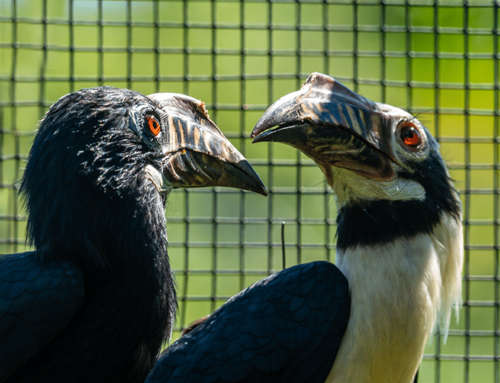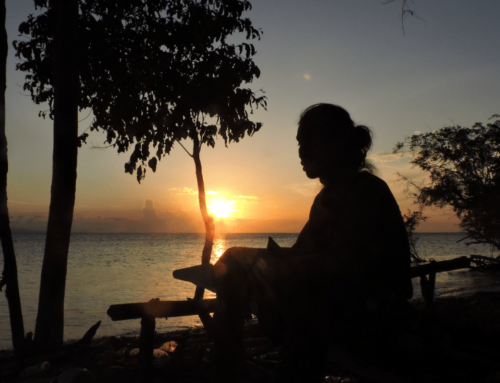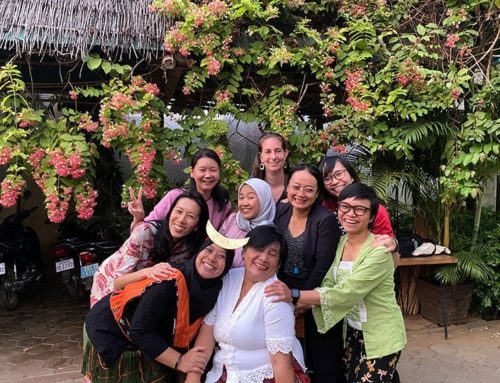The Mabuwaya Foundation is a conservation organisation based in Isabela province, in Northern Luzon, the Philippines. The organisation was started to build local protection for the Critically Endangered Philippine crocodile, or “bukarot” as it is known locally. The Philippine crocodile has the unwanted label of being the world’s rarest crocodile, and is only known to persist in a handful of locations in the world, one of which is Isabela province.
“Who loves bukarot?”
A sea of tiny hands shot into the air. We all grinned.
“Who has seen a bukarot?”
The hands stayed up, stretching up towards the sky, and a bubble of excited chatter erupted from the schoolchildren wanting to tell stories of their encounters with the world’s rarest crocodile.
I witnessed this scene again and again, in school after school, as I accompanied Synchronicity Earth’s partner Mabuwaya to give out school supplies in numerous villages around the province. In each school we visited the students excitedly lined up ready to receive our offering of a packed school bag (adorned with a crocodile photo, of course).
Their enthusiastic responses were in equal parts heart-warming (for the first question) and astonishing (for the second) considering the rarity of this species.
How do you save the world’s rarest crocodile?

Tess Gatan Balbas, Chief Operating Officer at Mabuwaya Foundation, who has won a ‘green oscar’ (the Whitley Fund for Nature award) for her work to protect the Critically Endangered Philippine crocodile. © Anna Heath
When Mabuwaya was founded in 2003, the Philippine crocodile faced an uncertain future. As the habitat of this species was heavily overlapping with local farms and villages, it was common practice for local people to kill crocodiles on sight to prevent attacks on livestock or people. Mabuwaya’s first official survey of the population of crocodiles in the region found only 24 crocodiles in the wild, and it was clear that lack of habitat and conflict with humans were key causes for this. And so began a programme of work which aimed first and foremost to build local pride and respect for the Philippine crocodile, and secondly to develop, with local communities, ways of protecting this species.
I have been speaking with Mabuwaya for three years, and in that time the team has explained the details of their work to me, from regular work in local schools, to the establishment of eight crocodile and 13 fish sanctuaries with specially trained guards from local communities. The team has told me about how they established a nest-guarding and head-starting programme, bringing hatchlings from the wild into captivity and caring for them for two years before re-releasing them. Through all of this work, Mabuwaya and the communities of Isabela province have supported their wild population of Philippine crocodiles to grow from 24 to 71 individuals, a distinct turn-around from the dwindling population in 2000.
It was clear from their reports and our conversations that Mabuwaya worked incredibly effectively with local communities, but it wasn’t until I visited them that I saw that it was more than this: Mabuwaya was the local community.

A local schoolteacher proudly showing Anna their handmade crocodile costume, which was fittingly made from cardboard repurposed from a graphic with the United Nations’s Sustainable Development Goals. © Anna Heath
In the second to last school we visited, one of the teachers carefully brought out a handmade crocodile costume to show us. It was explained to me that this was the costume their students had worn when they won the Philippine-crocodile-themed song and dance competition at a festival that had been held recently in the town. She and her students beamed as she told us about winning the competition, and I began to realise what the Mabuwaya team meant when they told me they worked to “build local pride” in the crocodile.
A meeting on the porch
The last village we visited on our school supply run was one close to the heart of Tess Gatan Balbas, the Chief Operating Officer at Mabuwaya. As we pulled up to a house at the side of the road, she told me that she had worked here for several years on a community development project, staying with this family, before joining Mabuwaya. We were invited to join the family and some friends for a much appreciated soft drink on their front porch. Conversation took off in Tagalog, and I was happy listening to (but not understanding) the local language and quietly stroking their blind and very friendly dog.

Important meetings often happen outside the office and official spaces- Tess discusses a reforestation proposal at a family home. © Anna Heath
I noticed after a while that Tess was sitting on the floor, intently drawing a map on a piece of paper she had pulled out of her bag. I looked questioningly at one of the Mabuwaya team sitting next to me, and they explained that the man Tess was talking to was a member of the local village council, and Tess was making a proposal about Mabuwaya’s reforestation project. Immediately I pictured myself presenting a carefully written and designed programme document in our board room in London – the equivalent of this meeting in my world.
The meaning of community-based conservation
It was at this moment that I felt I really understood what “community-based conservation” meant to Mabuwaya. This was not something you could write down in a project proposal or plan. This was a group of people that had spent all of their lives living in this place, developing relationships with people, and building an inherent understanding of the complex relationships between individuals and the environment they live in and with.
This has allowed Mabuwaya to work with their community to completely change attitudes to the “bukarot”, and biodiversity generally. This is work that takes time, and there is a long way to go in the region until its threatened biodiversity could be seen as safe. But thinking of all those hands in the air declaring their “love for bukarot”, I feel confident that this is a change that will last long into the future.
At Synchronicity Earth we believe strongly in supporting local communities and indigenous peoples to be involved in and lead conservation efforts. As such, we work to identify partners that are approaching community-based conservation in a bottom-up way.
This means conservation programmes that are developed with or by local communities, not for them. In this way, conservation work is inherently aligned with the needs of local people. Find out more about how we use this approach when identifying new partners and supporting them in their work.





